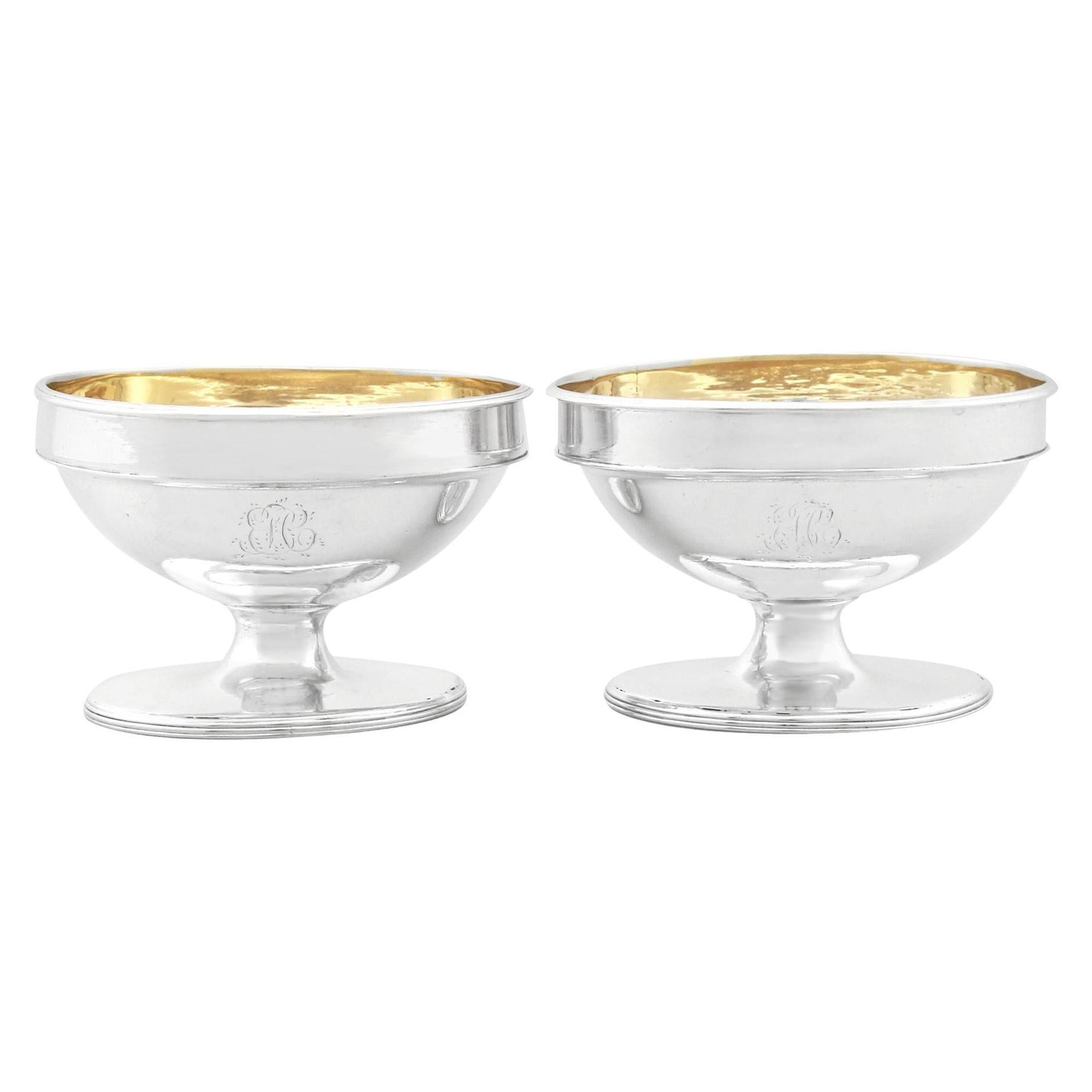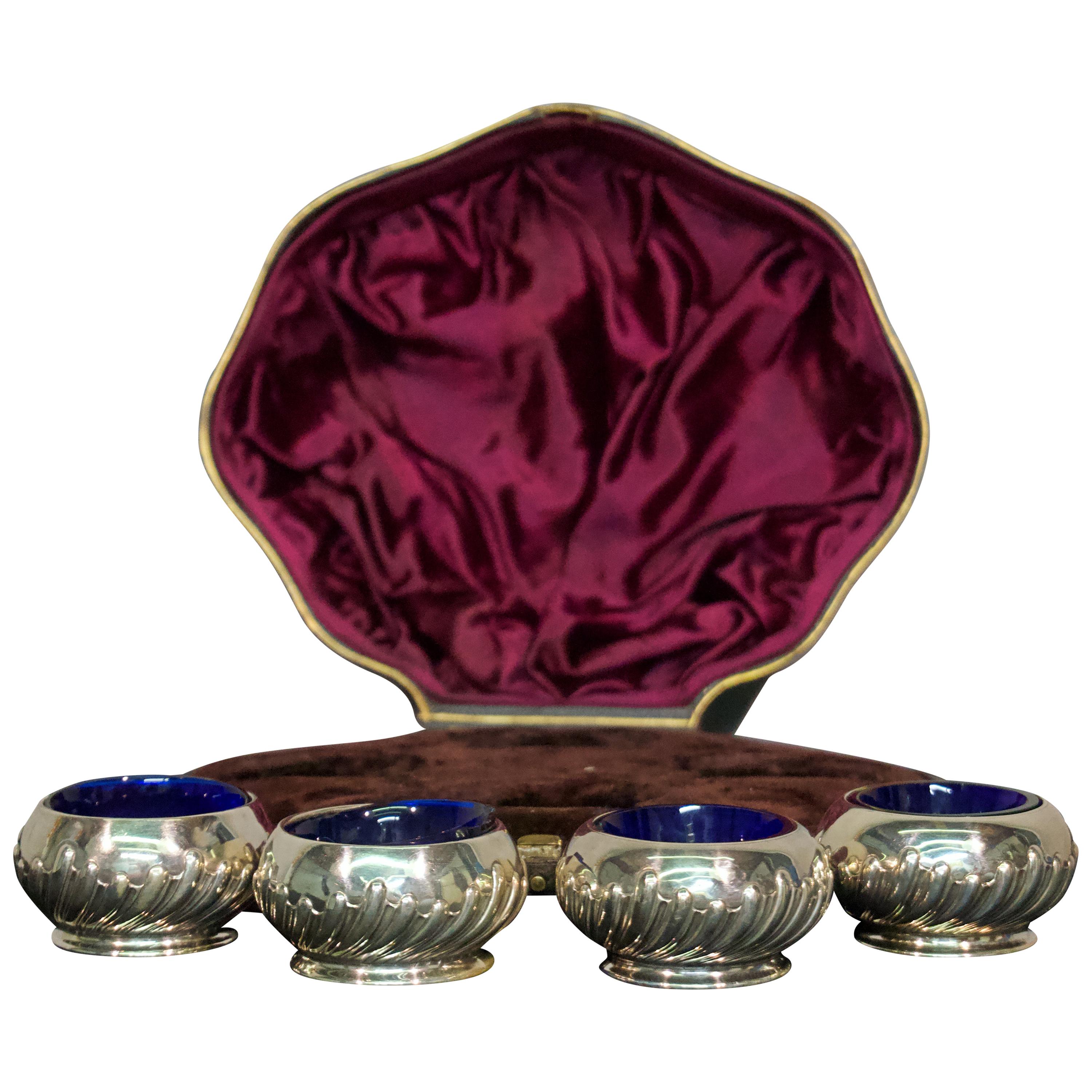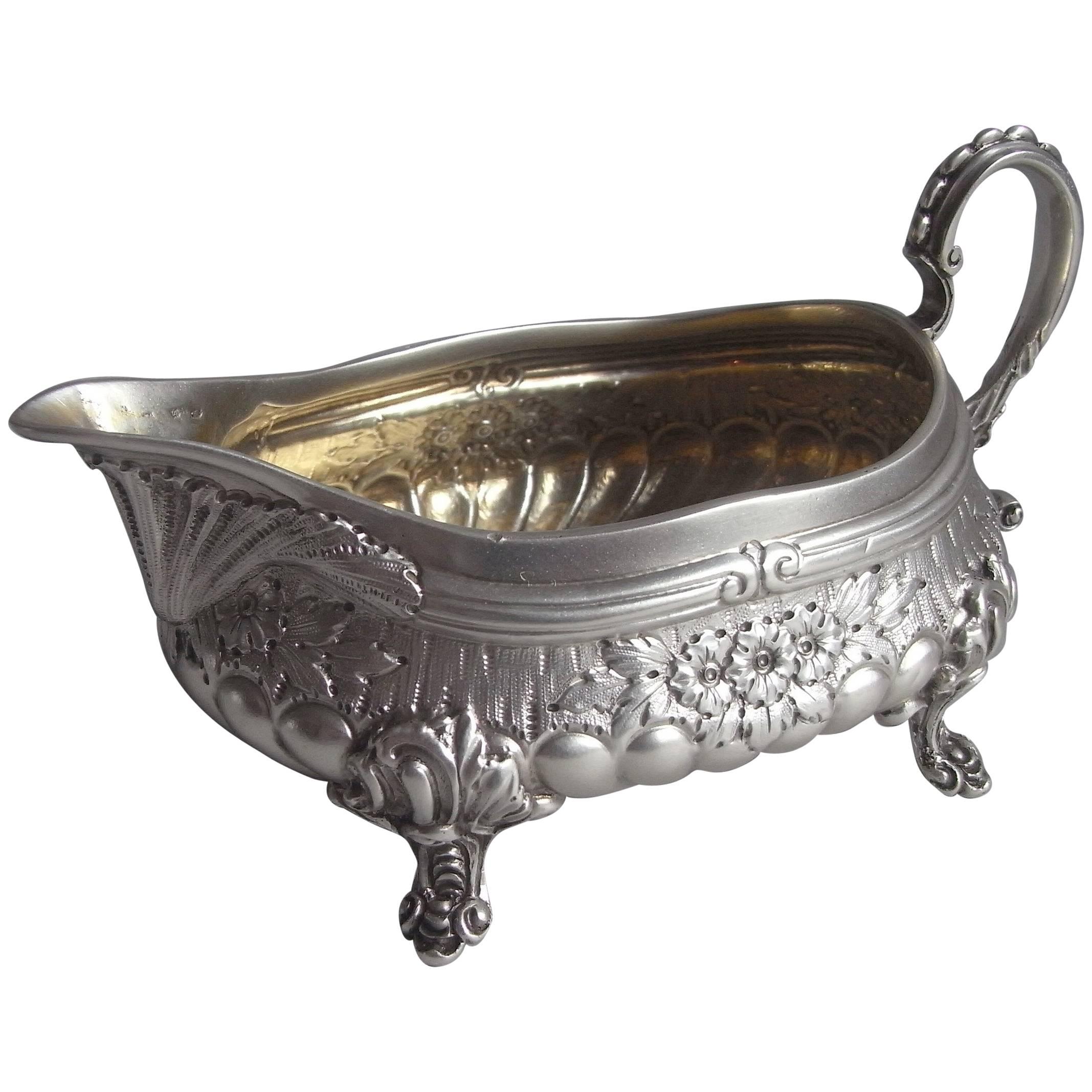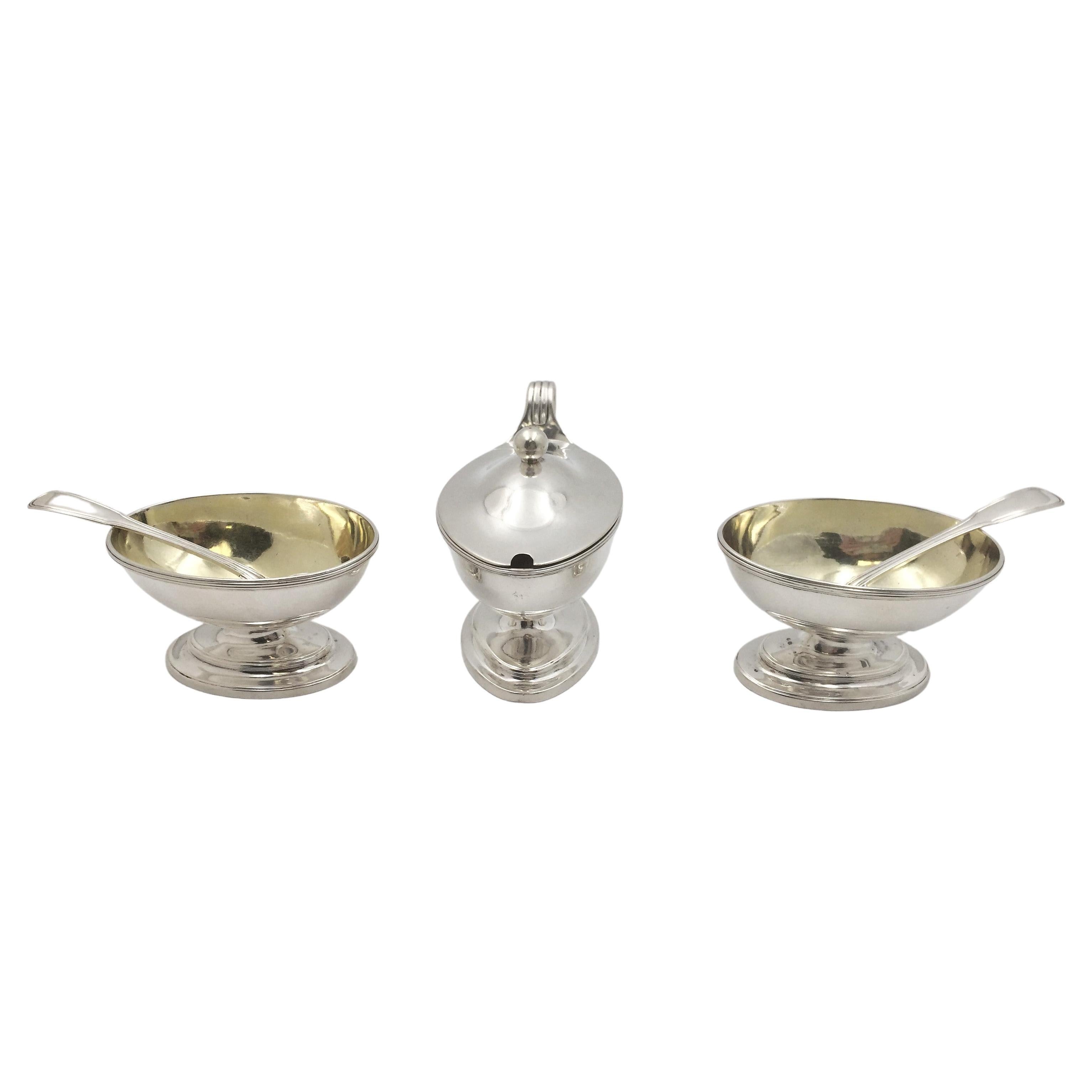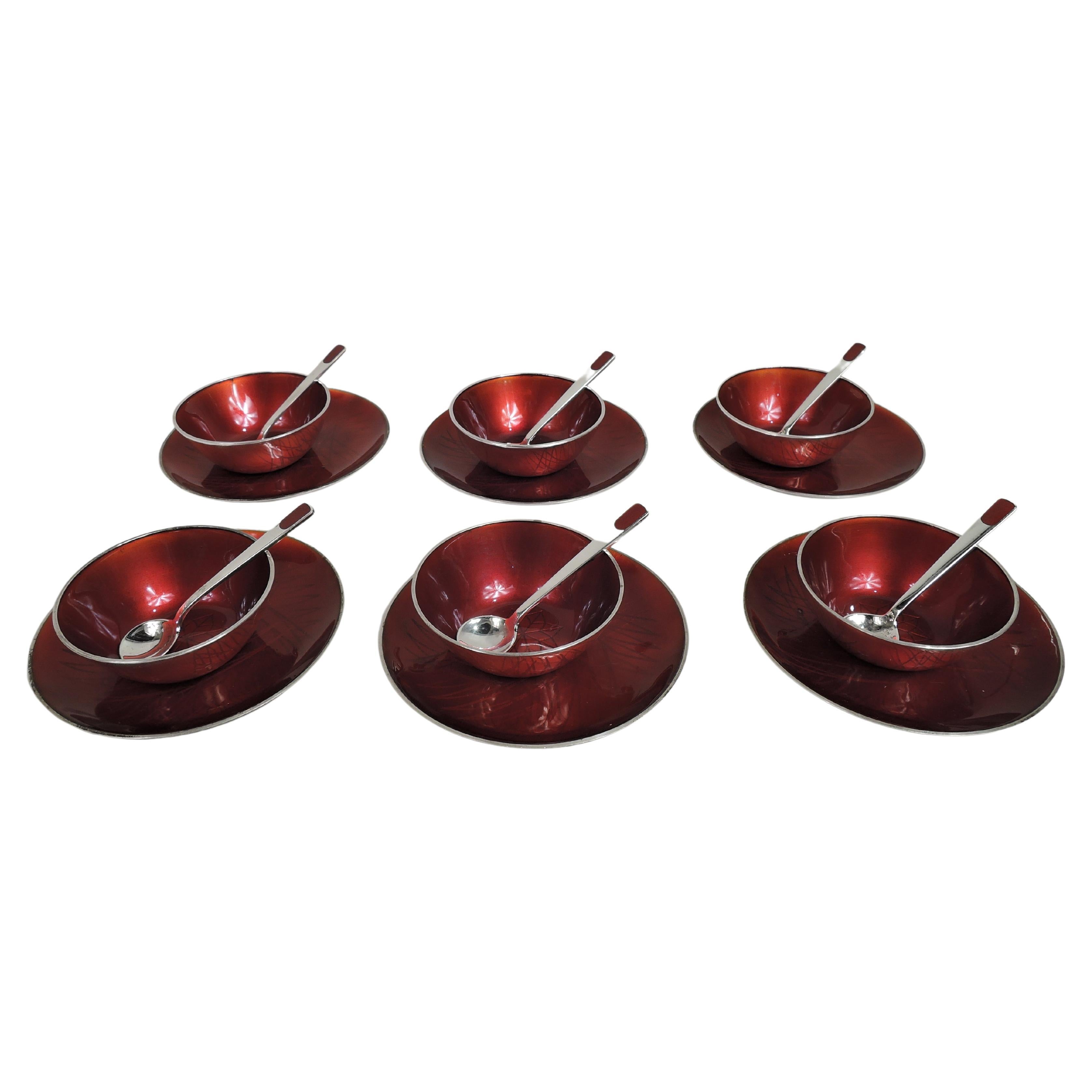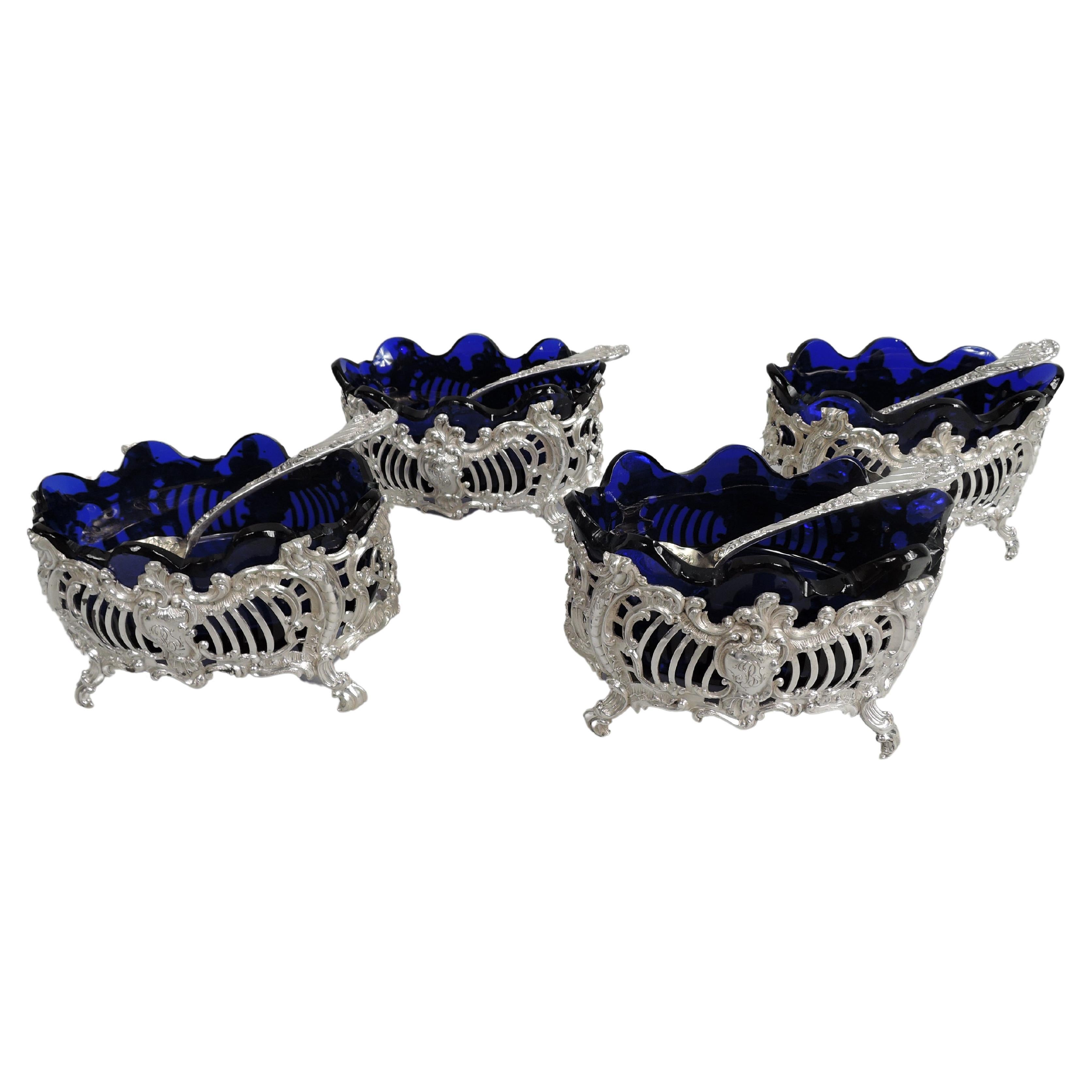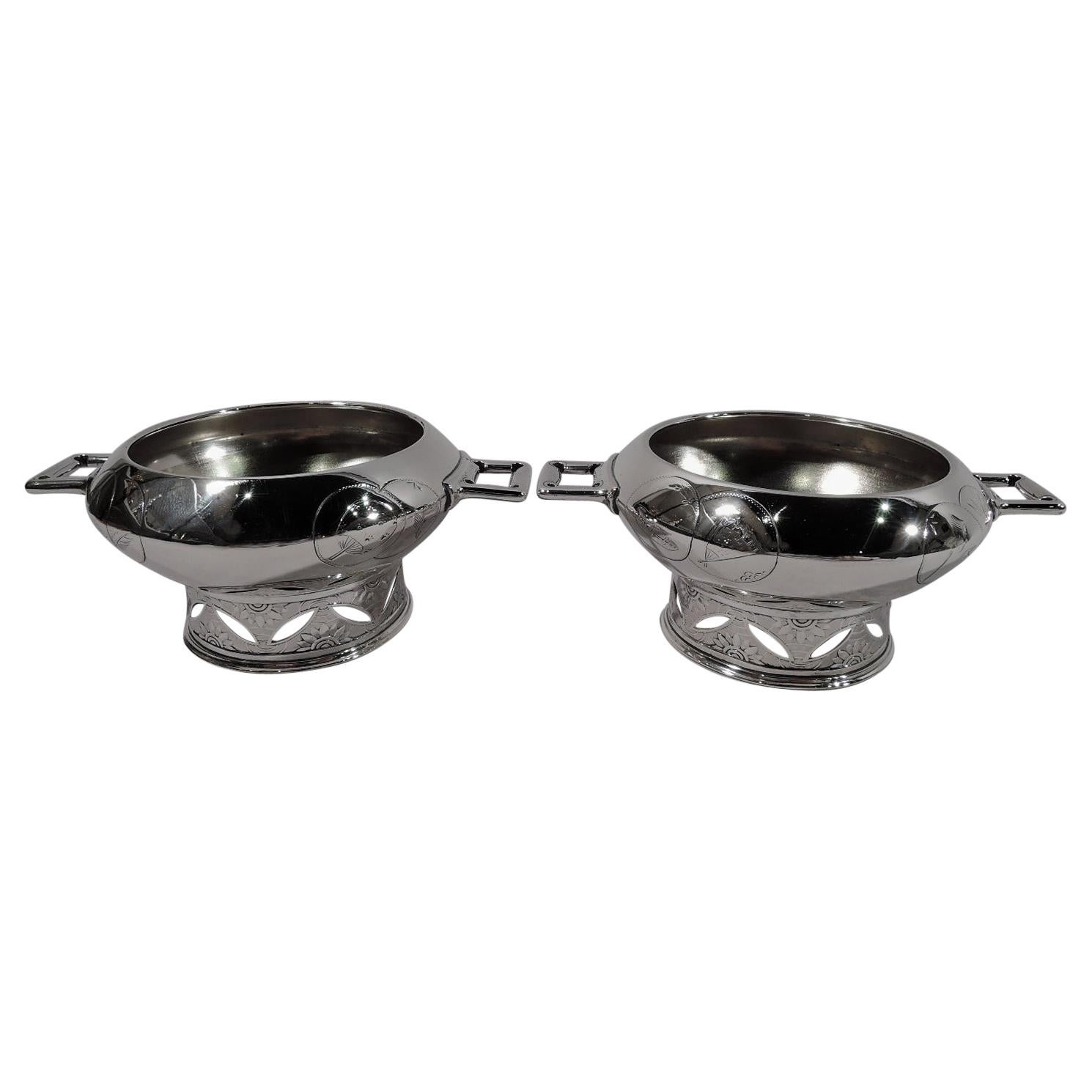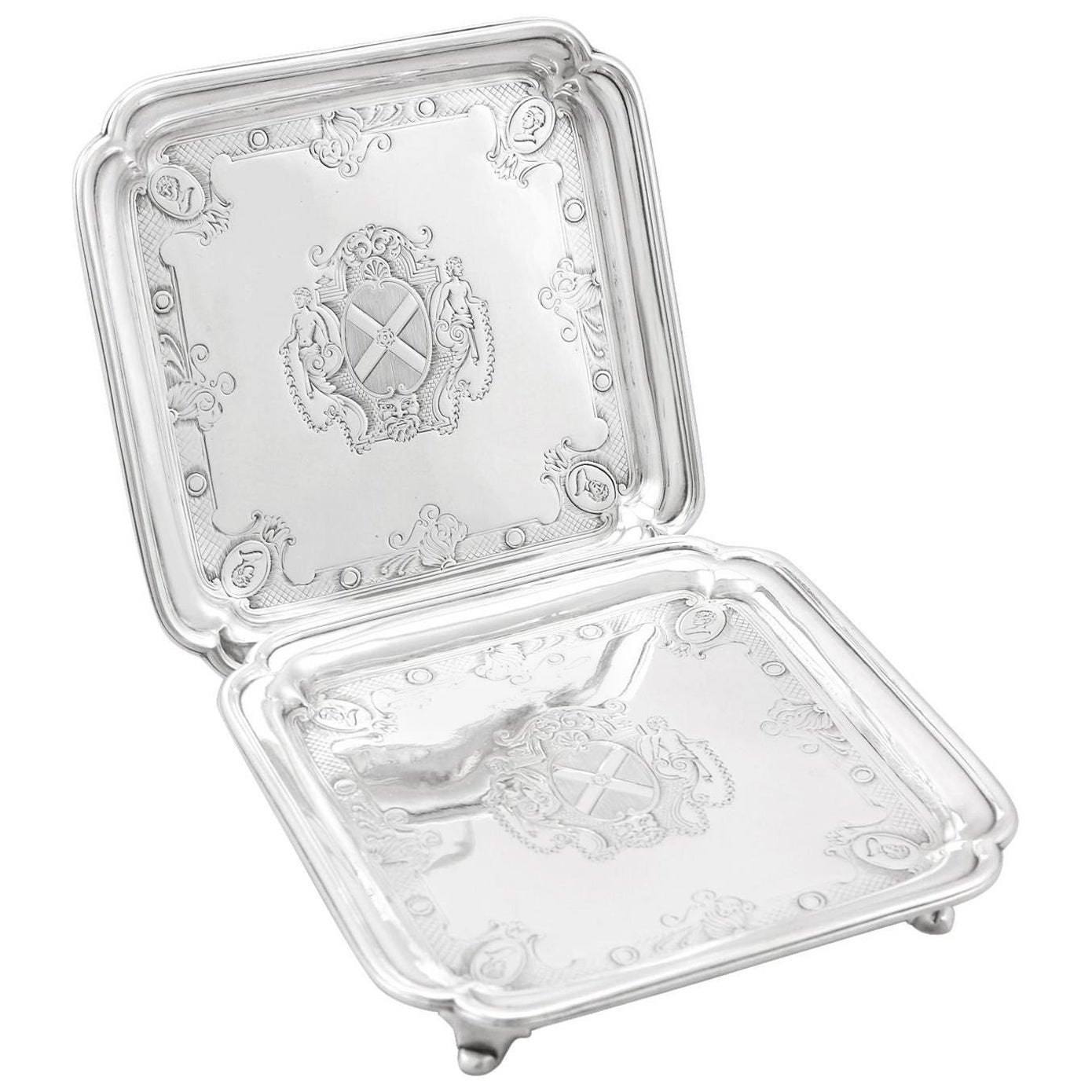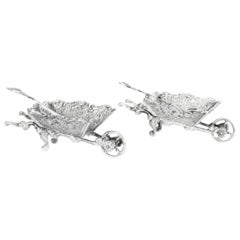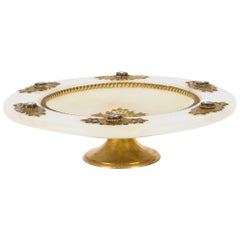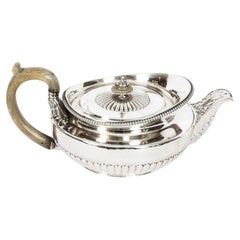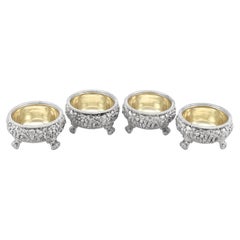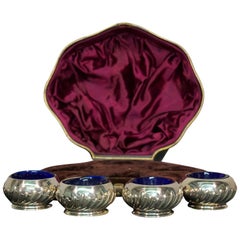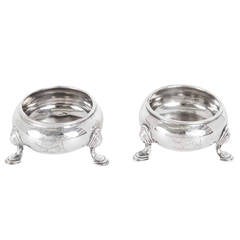
Antique Pair of Silver Salts by Paul de Lamerie 1734
View Similar Items
Want more images or videos?
Request additional images or videos from the seller
1 of 7
Antique Pair of Silver Salts by Paul de Lamerie 1734
About the Item
- Dimensions:Height: 1.97 in (5 cm)Width: 3.55 in (9 cm)Depth: 3.55 in (9 cm)
- Sold As:Set of 2
- Place of Origin:
- Period:
- Date of Manufacture:1734
- Condition:
- Seller Location:London, GB
- Reference Number:1stDibs: LU95061796172
About the Seller
5.0
Platinum Seller
These expertly vetted sellers are 1stDibs' most experienced sellers and are rated highest by our customers.
Established in 1983
1stDibs seller since 2012
1,201 sales on 1stDibs
Associations
LAPADA - The Association of Arts & Antiques Dealers
More From This SellerView All
- Antique Pair of French Silver Salts as Garden Wheelbarrows, 19th CenturyLocated in London, GBThis is a charming pair of antique French silver novelty table salt condiments in the form of garden wheelbarrows, dating from the late 19th century. Each wheel barrow having 'C' scroll Rococo style decoration to the bodies with shaped handles and a functioning wheel. Both table salts having a silver shovel...Category
Antique 1890s French Sterling Silver
MaterialsSilver
- Italian Pietra Dura Mounted Brass and Alabaster Comport Dish, 19th CenturyLocated in London, GBThis is a superb quality antique Italian Pietra Dura mounted, gilt brass and alabaster table-centre comport dish, dating from the late 19th century. With striking pierced Neo-Goth...Category
Antique 1890s Italian More Dining and Entertaining
MaterialsAlabaster, Brass
- Antique Rare Georgian Sterling Silver Teapot by Paul Storr 1817, 19th CenturyBy Paul StorrLocated in London, GBThis is an exceptional and very rare antique English George III sterling silver teapot by the world-famous silversmith, Paul Storr, and bearing hallmarks for 1817. This splendid teapot is of a delightful shape and it is profusely chased with half ribbed fluting decoration. It is further embellished with wonderful foliate motifs below and above the spout and stunning gadrooned shaped borders to the top of the teapot and the base. The remarkable quality flush hinged lid is also beautifully surmounted by a delightful round finial. It features an exceptional horn handle with striking details, proving the silversmith's exceptional mastery in the creation of unique and luxurious silverware - Paul Storr never tired of adding detail to create a true piece of artwork. The underside of the teapot bear full hallmarks: the Lion passant for sterling silver, the leopard head for London, the letter for 1817 and the maker's marks 'PS' for Paul Storr. There is no mistaking its unique quality and design, which is sure to make it a treasured piece by any discerning collector. Condition: In excellent condition with clear hallmarks and no dings, dents or signs of repair. Please see photos for confirmation. Dimensions in cm: height 12.5 x width 18 x depth 18 Weight 0.88 kg Dimensions in inches: height 5 inches x width 7 inches x depth 7 inches Weight 28.2 troy oz Paul Storr born in London England in 1771, was to become one of the most talented silversmiths of the nineteenth century. Today his legacy of exceptionally well crafted silver, found worldwide in museums and private collections, leaves one in awe when compared to that of his contemporaries.After having served a seven year apprenticeship from the age of 14, he began his career in 1792 when he went into a brief partnership with William Frisbee. This did not last and in 1793 a new mark, (his initials ‘P S’) was entered. By the beginning of the nineteenth century he had established himself as one of London’s top silversmiths producing, amongst others, commissions for Royalty. In 1801 he married Elizabeth Susanna Beyer with whom he was to have ten children. In 1807 Paul Storr entered into a working relationship with Philip Rundell and by 1811 was a partner, and managing the workshops for Rundell, Bridge & Rundell. During this period he kept his own marks and separate workshop. However it was through Rundell, Bridge & Rundell who were appointed Goldsmith in Ordinary to George III in 1804 that his reputation as a master silversmith grew. His talents lay in being able to transform ideas and designs from Rundell, Bridge & Rundell’s designers, William Theed...Category
Antique 1810s English George III Sterling Silver
MaterialsSterling Silver
- Antique George III Sterling Silver Salver by Paul Storr 1811 19th CenturyBy Paul StorrLocated in London, GBThis is a wonderful English antique George III sterling silver 10 inch salver, by the world famous silversmith Paul Storr. It has clear hallmarks for London 1811 and the makers mark of Paul Storr. It is typical of his work with the raised gadrooned rim with anthemion at intervals, on four fabulous foliate bracket feet. The salver is engraved with a crest and motto and the underside is later engraved Charlotte J. Parke from C. J. Parke, March 1893' The centre is engraved with a crest above a motto 'True and Fast' and I have researched this crest: The Crest of Parke The crest as engraved upon this George III English Sterling Silver Footed Salver by Paul Storr hallmarked London 1811 is that of the family of Parke. It may be blazoned as follows: Crest: A stag’s head couped sable holding in the mouth a key or Motto: True and fast The family of Parke originally hailed from the County of Cumberland in the northeast of England1 later settling in the County of Dorset at Henbury House, Sturminster Marshal, near Wimborne. Given the evidence of the inscription found on the underside of the salver ‘Charlotte J. Parke from C. J. Parke, March 1893’ it was undoubtedly at one time in the possession of Charles Joseph Parke (died 9th March 1893) of Henbury House aforesaid and gifted to Charlotte Josephine Parke (baptised 4th January 1857 died 2nd January 1941) his third daughter by his wife, Ellen Mary Ethelston. I would venture the following hypothesis that the salver was bequeathed to Charlotte in her father’s will that was granted probate at London on the 20th May 1893. The ‘March 1893’ of the inscription acts as a remembrance of the month of the death of her father. It was noted that Charlotte’s father left an estate worth some £66,892, 19 shillings and one pence, a very considerable sum in the last decade of the 19th Century and even thereafter. Charlotte never married and was living at the time of her death at The Coppice, Sixpenny Handley in the County of Dorset. Her will was proved for probate at Llandudno on the 25th March 1941. She left an estate worth £18,866, 10 shillings and 4 pence. Again, a comfortable sum in 1941. See the photo of Henbury House, Sturminster Marshal, near Wimborne, Co. Dorset. The former seat of the Parke family. The house was destroyed by fire, the remains of which were demolished in the 1990's. There is no mistaking its unique quality and design, which is sure to make it a treasured piece by any discerning collector. Condition: In excellent condition with clear hallmarks and no dings, dents or signs of repair. Please see photos for confirmation. Dimensions in cm: Height 2 x Width 26.5 x Depth 26.5 Weight 0.69 kg Dimensions in inches: Height 1 inch x Width 10 inches x Depth 10 inches Weight 1.5 lbs Paul Storr born in London England in 1771, was to become one of the most talented silversmiths of the nineteenth century. Today his legacy of exceptionally well crafted silver, found worldwide in museums and private collections, leaves one in awe when compared to that of his contemporaries.After having served a seven year apprenticeship from the age of 14, he began his career in 1792 when he went into a brief partnership with William Frisbee. This did not last and in 1793 a new mark, (his initials ‘P S’) was entered. By the beginning of the nineteenth century he had established himself as one of London’s top silversmiths producing, amongst others, commissions for Royalty. In 1801 he married Elizabeth Susanna Beyer with whom he was to have ten children. In 1807 Paul Storr entered into a working relationship with Philip Rundell and by 1811 was a partner, and managing the workshops for Rundell, Bridge & Rundell. During this period he kept his own marks and separate workshop. However it was through Rundell, Bridge & Rundell who were appointed Goldsmith in Ordinary to George III in 1804 that his reputation as a master silversmith grew. His talents lay in being able to transform ideas and designs from Rundell, Bridge & Rundell’s designers, William Theed...Category
Antique 1810s English George III Sterling Silver
MaterialsSterling Silver
- Antique Pair of Sevres Napoleon Cabinet Plates Mentmirail Imp De SevresLocated in London, GBThis is an enchanting antique pair of Sevres porcelain cabinet plates, late 19th century in date. Both are beautifully painted with scenes from the life of Napoleon on the battle field with royal blue borders with classical gilt decoration. One is titled "Montmirail" on the undersides, for The Battle of...Category
Antique 1890s French Porcelain
MaterialsPorcelain
- Antique Large William IV Silver Tray Salver by Paul Storr 1837 19th CenturyBy Paul StorrLocated in London, GBThis is a wonderful English antique William IV sterling silver tray, or salver, by the world famous silversmith Paul Storr. It has clear hallmarks for London 1837 the makers mark of Paul Storr and is also engraved Storr & Mortimer 36, they were Goldsmiths and Jewellers to Her Majesty’ (1822-1839). It is typical of his work with the octafoil shape and the exquisitely detailed foliate and acorn rim. It is raised on four delightful foliate and scroll feet. The centre is engraved with a shield shaped coat of arms encompassing the lion rampant which I have had researched: The Arms of the Family of King The arms as engraved upon this William IV English Sterling Silver Footed Salver by Paul Storr hallmarked London 1837 are those of the family of King. They may be blazoned as follows: Arms: Sable a lion rampant between three crosses formy fitchy argent Undoubtedly this salver was in the possession of a gentleman who was member of a family bearing the name of King. There are a number of variants of these armorial bearings being borne by King families. Very often the lion is of a different tincture but the field of the shield is invariably remains ‘sable’. Similar arms and crest were recorded by Sir Edward Bysshe, Clarenceux King of Arms in his Visitation of the County of Kent of 1663 to the family of King, of Bromley. The tinctures of both arms and crest of King, of Bromley were slightly different to those engraved upon this tureen in that the Visitation family’s arms were ‘Sable a lion rampant ermine between three crosses paty fitchy or’ 1 and the crest ‘A lion’s gamb erect and erased sable holding a cross paty fitchy or’(see illustration below). These arms and crest were granted by Sir Edward Walker, Garter King of Arms on the 20th February 1660 – 61; and yet another Kentish family of King, of Bellevue who were created Baronets within the Baronetage of Great Britain in 1792 bore for their arms ‘Sable a lion rampant erminois between three crosses paty fitchy or’. Their crest being the same as the family of King, of Bromley. There is no mistaking its unique quality and design, which is sure to make it a treasured piece by any discerning collector. Please see potos of the 2nd Baronet Timothy Shelley, 1753-1844 and Castle Goring, his home. Condition: In excellent condition with clear hallmarks and no dings, dents or signs of repair. Please see photos for confirmation. Dimensions in cm: height 4 x width 44 x depth 44 Weight 1.96 kg Dimensions in inches: height 2 inches x width 1 foot, 5 inches x depth 1 foot, 5 inches Weight 63 troy oz Paul Storr born in London England in 1771, was to become one of the most talented silversmiths of the nineteenth century. Today his legacy of exceptionally well crafted silver, found worldwide in museums and private collections, leaves one in awe when compared to that of his contemporaries.After having served a seven year apprenticeship from the age of 14, he began his career in 1792 when he went into a brief partnership with William Frisbee. This did not last and in 1793 a new mark, (his initials ‘P S’) was entered. By the beginning of the nineteenth century he had established himself as one of London’s top silversmiths producing, amongst others, commissions for Royalty. In 1801 he married Elizabeth Susanna Beyer with whom he was to have ten children. In 1807 Paul Storr entered into a working relationship with Philip Rundell and by 1811 was a partner, and managing the workshops for Rundell, Bridge & Rundell. During this period he kept his own marks and separate workshop. However it was through Rundell, Bridge & Rundell who were appointed Goldsmith in Ordinary to George III in 1804 that his reputation as a master silversmith grew. His talents lay in being able to transform ideas and designs from Rundell, Bridge & Rundell’s designers, William Theed...Category
Antique 1830s English William IV Sterling Silver
MaterialsSterling Silver
You May Also Like
- Antique Sterling Silver Salts, 1818Located in Jesmond, Newcastle Upon TyneAn exceptional, fine and impressive set of four antique Georgian English sterling silver salts; an addition to our silver cruet and condiment collection ...Category
Antique 1810s English George III Sterling Silver
MaterialsSterling Silver
- Henry Chawner Antique 1790s Sterling Silver SaltsBy Henry ChawnerLocated in Jesmond, Newcastle Upon TyneA fine and impressive pair of antique Georgian English sterling silver salts made by Henry Chawner; an addition to our silver cruet and condiment collection. These fine antique George III sterling silver salts have a plain rounded oval form to an oval pedestal foot. The surface of each salt is encircled with a plain applies girdle above the contemporary engraved initials 'EPC'. The oval feet and upper rims of these impressive examples of Georgian silverware are encircled with applied thread decorated borders. These antique salts, crafted by the renowned London silversmith Henry Chawner, have gilded interiors. Condition These antique silver salts...Category
Antique 1790s British George III Sterling Silver
MaterialsSilver, Sterling Silver
- Regency Sterling Silver, Silver SaltsLocated in New York, NYWith cobalt blue glass bowl inserts and leather presentation case. Dimensions: Box width 7 ½, depth 7”, height 2 3/4” Containers diameter 2”,...Category
Antique 19th Century English Regency Sterling Silver
MaterialsSterling Silver
$2,960 Sale Price20% Off - Rare Cast Cream Boat, in the Manner of Paul de Lamerie, Made in London in 1890Located in London, GBThe cast cream boat is of a very unusual design in the manner of Paul de Lamerie. This piece stands on four scroll feet attached to the sides with foliate mouldings. The main body ha...Category
Antique Late 19th Century English More Dining and Entertaining
- Pair of Silver Plated Reclining Monkey Salts or Nut DishesLocated in West Palm Beach, FLPair of silver plated reclining monkey salts or nut dishes each one realistically cast and modeled holding banana bowls. Unmarked. Reclining monkey measures 3.75" W x 1.5" H x 3" D Sitting Monkey...Category
20th Century European Sheffield and Silverplate
MaterialsSilver Plate
$396 Sale Price / set20% Off - 18th Century Pair of Sterling Silver Open Salts and Mustard Pot Georgian StyleBy John Wakelin & William TaylorLocated in New York, NYJohn Wakelin & William Taylor pair of sterling silver open salts from 1783 in Georgian style with gilt wash bowls and in exquis...Category
Antique Late 18th Century English Georgian Sterling Silver
MaterialsSilver, Sterling Silver
Recently Viewed
View AllMore Ways To Browse
French Bath Tub
Antique Bath Tubs
Bath Tub Antique
Germain Sterling
George Huguenot
De Lamerie London
18th Century Bath Tub
Antique Bath Tub
Fontainebleau Sterling
Antique Solid Silver Salts
Tub Dining
Copper Dutch Oven
Dansk Mug
Filigree Napkin
Copper Fondue
Meissen Purple Indian Cream
Napkin Rings Horn
Noritake Ivory China

